Singular Spectrum Analysisfor Time Series
Contents
1 Introduction
1.1 Preliminaries
1.2 SSA Methodology and the Structure of the Book
1.3 SSA Topics Outside the Scope of This Book
1.4 Common Symbols and Acronyms
References
2 Basic SSA
2.1 The Main Algorithm
2.1.1 Description of the Algorithm
2.1.2 Analysis of the Four Steps in Basic SSA
2.2 Potential of Basic SSA
2.2.1 Extraction of Trends and Smoothing
2.2.2 Extraction of Periodic Components
2.2.3 Complex Trends and Periodicities with Varying Amplitudes
2.2.4 Finding Structure in Short Time Series
2.2.5 Envelopes of Oscillating Signals and Estimation of Volatility
2.3 Models of Time Series and SSA Objectives
2.3.1 SSA and Models of Time Series
2.3.2 Classification of the Main SSA Tasks
2.3.3 Separability of Components of Time Series
2.4 Choice of Parameters in Basic SSA
2.4.1 General Issues
2.4.2 Grouping for Given Window Length
2.4.3 Window Length
2.4.4 Signal Extraction
2.4.5 Automatic Identification of SSA Components
2.5 Some Variations of Basic SSA
2.5.1 Preprocessing
2.5.2 Centering in SSA
2.5.3 Stationary Series and Toeplitz SSA
2.5.4 Rotations for Separability: SSA--ICA
2.5.5 Sequential SSA
2.5.6 Computer Implementation of SSA
2.5.7 Replacing the SVD with Other Procedures
References
3 SSA for Forecasting, Interpolation, Filtration and Estimation
3.1 SSA Forecasting Algorithms
3.1.1 Main Ideas and Notation
3.1.2 Formal Description of the Algorithms
3.1.3 SSA Forecasting Algorithms: Similarities and Dissimilarities
3.1.4 Appendix: Vectors in a Subspace
3.2 LRR and Associated Characteristic Polynomials
3.2.1 Basic Facts
3.2.2 Roots of the Characteristic Polynomials
3.2.3 Min-Norm LRR
3.3 Recurrent Forecasting as Approximate Continuation
3.3.1 Approximate Separability and Forecasting Errors
3.3.2 Approximate Continuation and the Characteristic Polynomials
3.4 Confidence Bounds for the Forecast
3.4.1 Monte Carlo and Bootstrap Confidence Intervals
3.4.2 Confidence Intervals: Comparison of Forecasting Methods
3.5 Summary and Recommendations on Forecasting Parameters
3.6 Case Study: `Fortified Wine'
3.6.1 Linear Recurrence Relation Governing the Time Series
3.6.2 Choice of Forecasting Methods and Parameters
3.7 Missing Value Imputation
3.7.1 SSA for Time Series with Missing Data: Algorithm
3.7.2 Discussion
3.7.3 Example
3.8 Subspace-Based Methods and Estimation of Signal Parameters
3.8.1 Basic Facts
3.8.2 ESPRIT
3.8.3 Overview of Other Subspace-Based Methods
3.8.4 Cadzow Iterations
3.9 SSA and Filters
3.9.1 Linear Filters and Their Characteristics
3.9.2 SSA Reconstruction as a Linear Filter
3.9.3 Middle Point Filter
3.9.4 Last Point Filter and Forecasting
3.9.5 Causal SSA (Last-Point SSA)
References


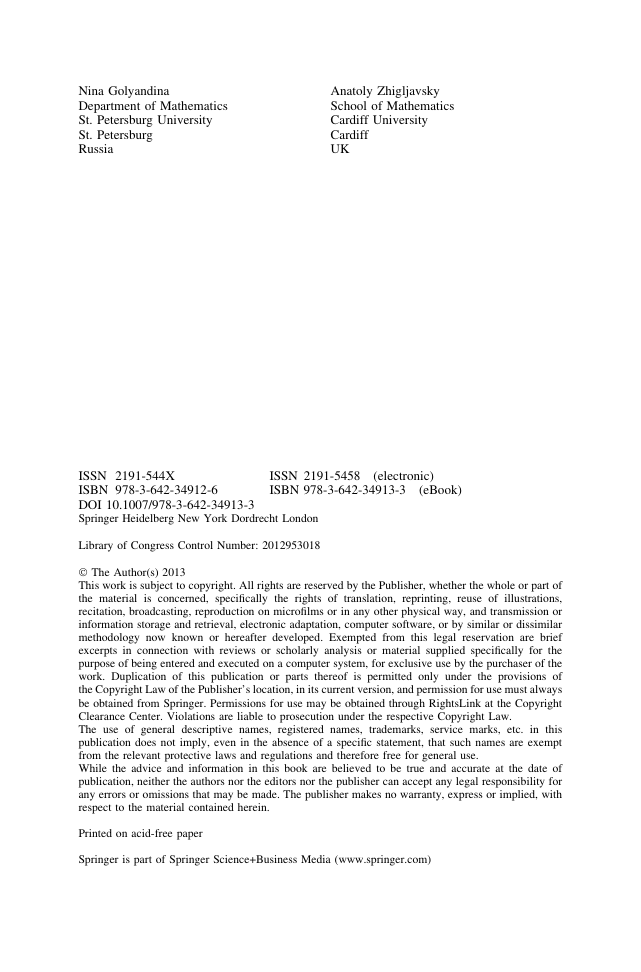
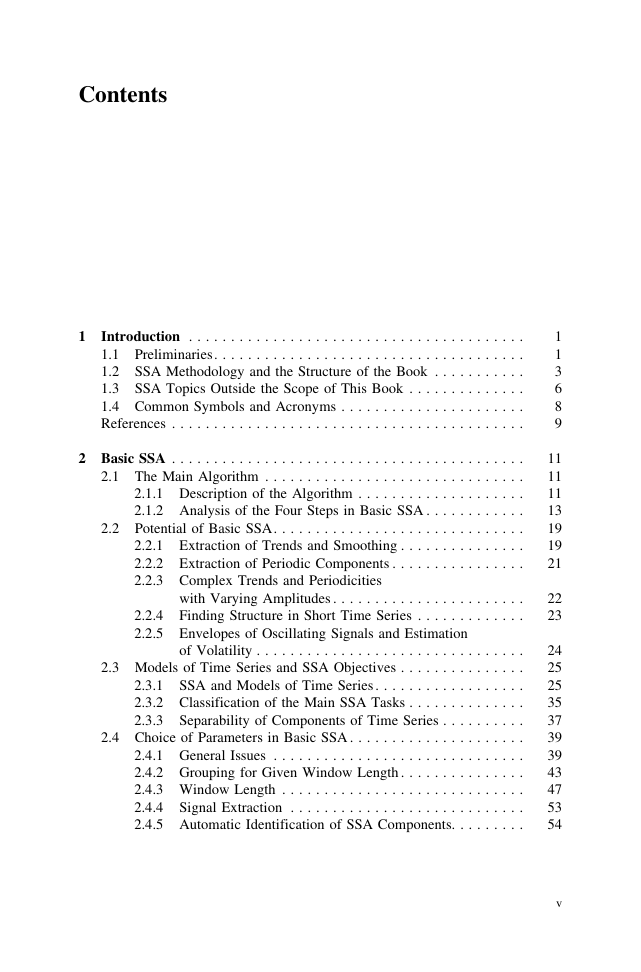
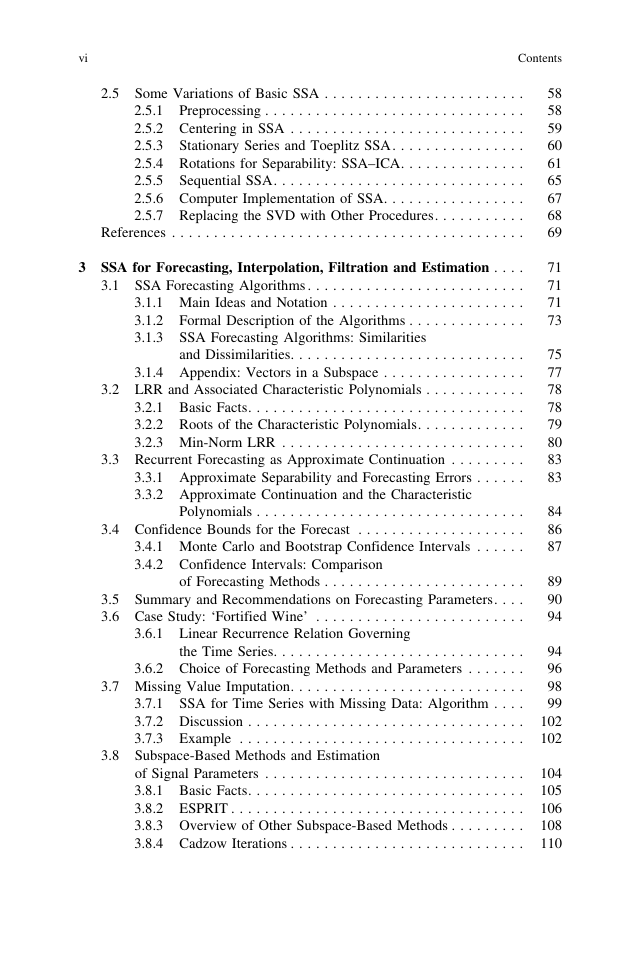
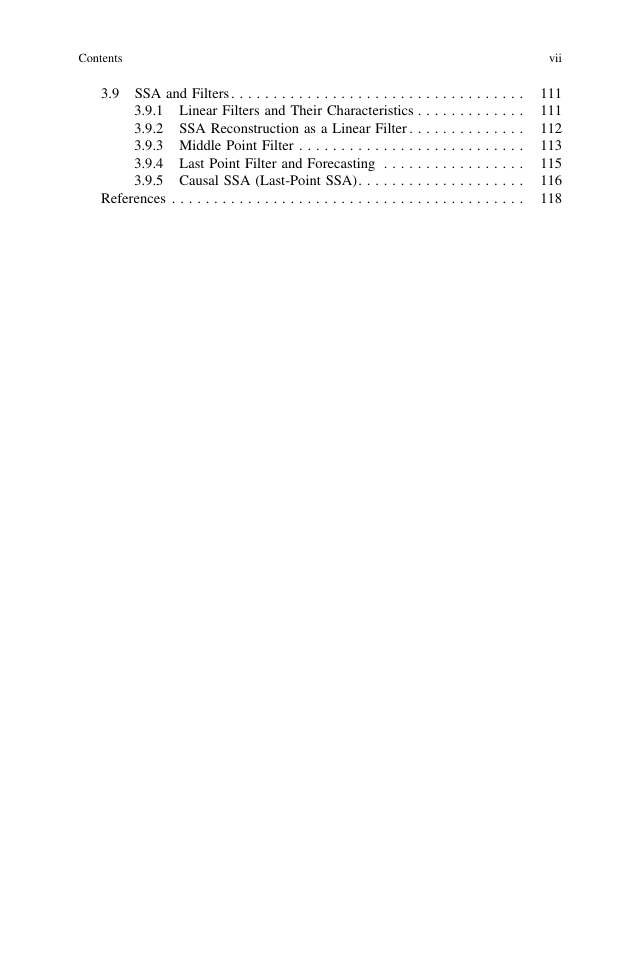
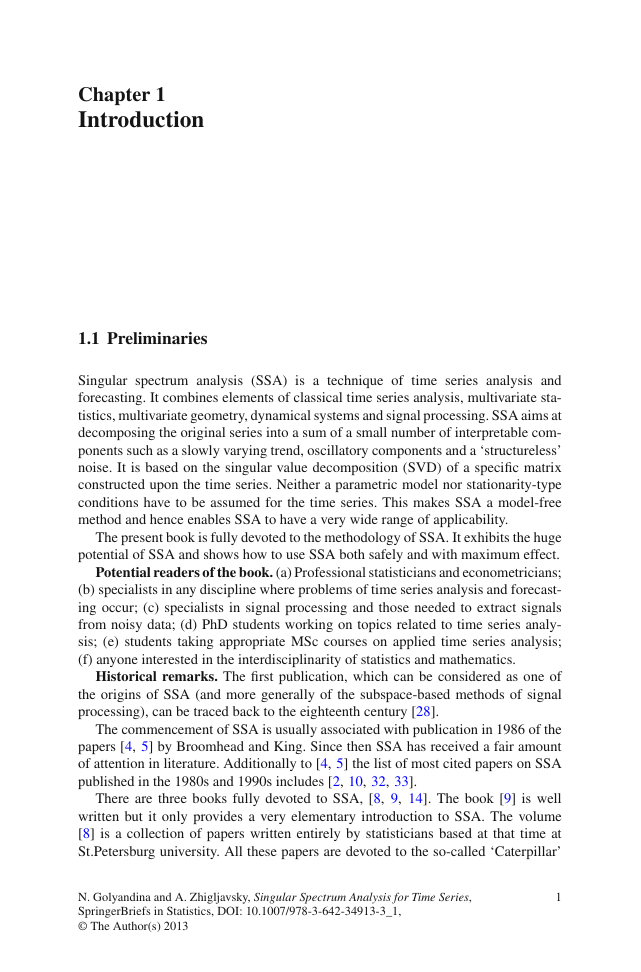
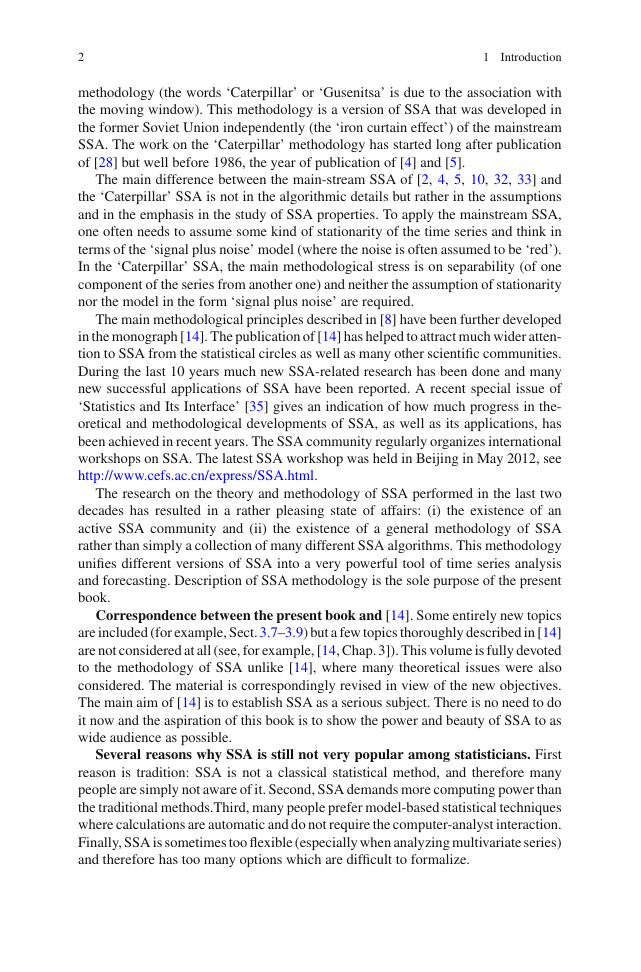








 2023年江西萍乡中考道德与法治真题及答案.doc
2023年江西萍乡中考道德与法治真题及答案.doc 2012年重庆南川中考生物真题及答案.doc
2012年重庆南川中考生物真题及答案.doc 2013年江西师范大学地理学综合及文艺理论基础考研真题.doc
2013年江西师范大学地理学综合及文艺理论基础考研真题.doc 2020年四川甘孜小升初语文真题及答案I卷.doc
2020年四川甘孜小升初语文真题及答案I卷.doc 2020年注册岩土工程师专业基础考试真题及答案.doc
2020年注册岩土工程师专业基础考试真题及答案.doc 2023-2024学年福建省厦门市九年级上学期数学月考试题及答案.doc
2023-2024学年福建省厦门市九年级上学期数学月考试题及答案.doc 2021-2022学年辽宁省沈阳市大东区九年级上学期语文期末试题及答案.doc
2021-2022学年辽宁省沈阳市大东区九年级上学期语文期末试题及答案.doc 2022-2023学年北京东城区初三第一学期物理期末试卷及答案.doc
2022-2023学年北京东城区初三第一学期物理期末试卷及答案.doc 2018上半年江西教师资格初中地理学科知识与教学能力真题及答案.doc
2018上半年江西教师资格初中地理学科知识与教学能力真题及答案.doc 2012年河北国家公务员申论考试真题及答案-省级.doc
2012年河北国家公务员申论考试真题及答案-省级.doc 2020-2021学年江苏省扬州市江都区邵樊片九年级上学期数学第一次质量检测试题及答案.doc
2020-2021学年江苏省扬州市江都区邵樊片九年级上学期数学第一次质量检测试题及答案.doc 2022下半年黑龙江教师资格证中学综合素质真题及答案.doc
2022下半年黑龙江教师资格证中学综合素质真题及答案.doc